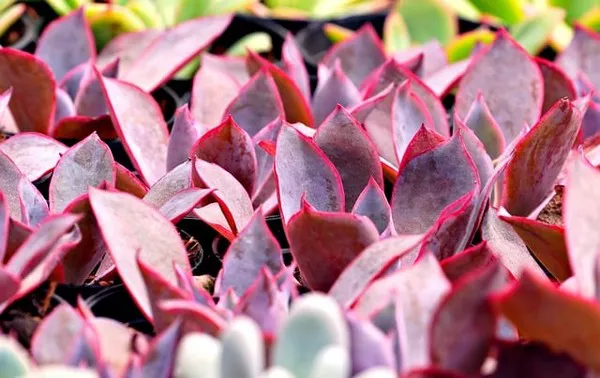Succulents, with their unique and diverse forms, have become a favorite among plant enthusiasts for their beauty and resilience. One of the most rewarding experiences for succulent lovers is propagating new plants from cuttings. Watching a tiny cutting develop roots and grow into a flourishing plant can be immensely satisfying. However, propagating succulents from cuttings requires careful attention to detail and proper technique. In this comprehensive guide, we will explore the step-by-step process of propagating succulent cuttings and provide tips for ensuring successful root growth.
Understanding Succulent Propagation
Before delving into the specifics of propagating succulent cuttings, it is essential to understand the biology behind the process. Succulents are known for their ability to store water in their leaves, stems, or roots, allowing them to survive in arid conditions. This water-storing capacity also plays a crucial role in propagation.
When a succulent cutting is taken from a parent plant, it contains stored water and the potential to develop roots and grow into a new plant. The key to successful propagation lies in providing the right conditions for the cutting to establish roots and sustain itself independently.
Selecting Healthy Cuttings
The first step in propagating succulents from cuttings is selecting suitable plant material. Choose healthy, mature succulents with firm stems and plump leaves for optimal results. Avoid using damaged or diseased plant material, as it may hinder the propagation process.
When selecting a cutting, look for a segment of stem that is at least 2-3 inches long. Use clean, sharp scissors or pruning shears to make a clean cut just below a node, where leaves attach to the stem. Nodes are essential for root development, so ensure that your cutting has at least one or two nodes intact.
Preparing the Cuttings
Once you have selected your cuttings, allow them to callus before planting. Callusing is the process of forming a protective layer of tissue over the cut end, which helps prevent rotting and promotes root growth. Place the cuttings in a warm, dry location away from direct sunlight and allow them to callus for 1-3 days, depending on the species and environmental conditions.
After the cuttings have callused, they are ready for planting. Fill a well-draining container with a suitable succulent potting mix or a combination of cactus mix and perlite. Make a hole in the soil with your finger or a pencil and gently insert the cut end of the cutting into the soil, ensuring that the node is buried beneath the surface.
Providing Optimal Growing Conditions
Once planted, succulent cuttings require specific environmental conditions to encourage root growth. Place the container in a bright location with indirect sunlight, as intense sunlight can scorch the delicate cuttings. Avoid overwatering, as succulents are prone to rotting in soggy soil. Instead, water sparingly, allowing the soil to dry out partially between waterings.
Maintain a consistent temperature between 65-75°F (18-24°C) to promote root development. Avoid exposing the cuttings to extreme temperatures or drafts, as they can stress the plants and hinder growth. Additionally, ensure adequate airflow around the cuttings to prevent fungal infections and promote healthy growth.
Monitoring and Care
Once the cuttings are planted and provided with suitable growing conditions, monitor them closely for signs of progress. Initially, there may be little visible growth as the cuttings focus on establishing roots underground. However, you can gently tug on the cuttings after a few weeks to check for resistance, indicating that roots have begun to develop.
Continue to water the cuttings sparingly, adjusting the frequency based on environmental conditions and the moisture level of the soil. As the cuttings develop roots and grow, gradually transition them to standard succulent care routines, including regular watering and fertilization.
Troubleshooting Common Issues
While propagating succulent cuttings is relatively straightforward, there are some common issues that may arise along the way. Here are a few troubleshooting tips for addressing potential problems:
1. Rotting: If the cuttings start to rot or develop mushy spots, it is likely due to overwatering or poor drainage. Remove any affected cuttings immediately and adjust your watering routine to allow the soil to dry out more between waterings.
2. Lack of Root Growth: If the cuttings fail to develop roots after several weeks, they may not have received enough warmth or humidity. Try providing bottom heat or covering the container with a clear plastic dome to create a mini greenhouse effect and promote root growth.
3. Wilting or Shrinking: If the cuttings appear wilted or start to shrink, they may be experiencing dehydration. Increase the frequency of watering slightly, ensuring that the soil is moist but not waterlogged.
4. Pest Infestations: Keep an eye out for pests such as mealybugs or aphids, which can damage succulent cuttings. If you notice any signs of infestation, treat the plants with neem oil or insecticidal soap to eliminate the pests.
By addressing these issues promptly and adjusting your care routine as needed, you can maximize the chances of success when propagating succulent cuttings.
Celebrating Success
As the weeks pass, you will begin to see signs of growth as tiny roots emerge from the cuttings and new leaves start to unfurl. This is a testament to your patience and care as a plant parent. Celebrate each milestone along the way, from the first signs of root growth to the emergence of new growth.
Once the cuttings have established roots and are growing vigorously, you can transplant them into individual pots or incorporate them into succulent arrangements. Share your success with fellow plant enthusiasts and inspire others to embark on their propagation journey.
Conclusion
In conclusion, propagating succulent cuttings is a rewarding and fulfilling experience that allows you to expand your succulent collection and share the beauty of these remarkable plants with others. By following the steps outlined in this guide and providing the proper care and attention, you can successfully grow roots from succulent cuttings and watch them thrive and flourish in your home or garden.


